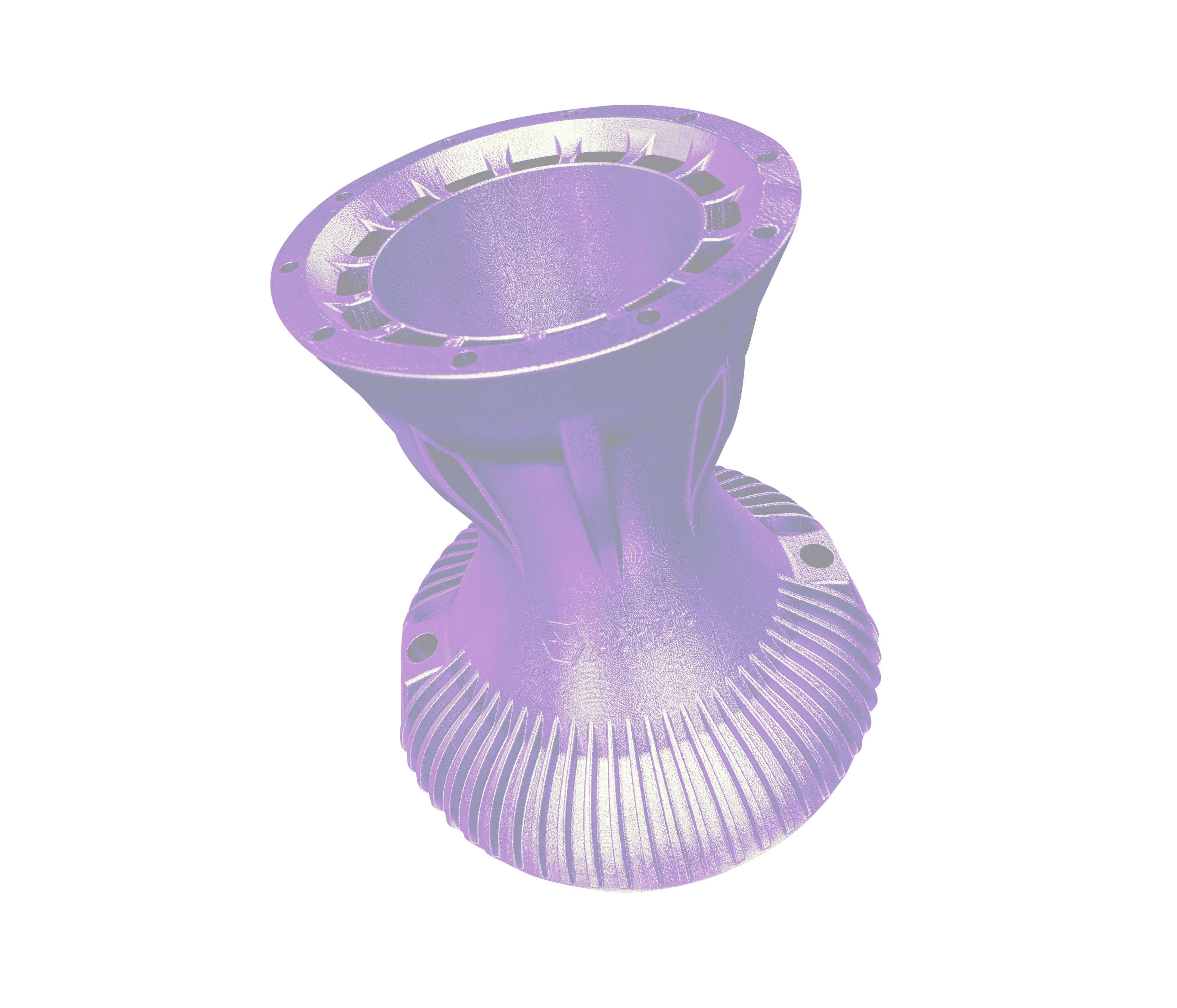See how this 3D printed inductor has met all quality specifications, and its industrial performance has surpassed initial expectations.
An induction heating coil is a production tool that allows performing a local heat treatment on metallic parts; in this case, it is used to braze contact tips on copper or brass parts, assembled into circuit breakers and contactors. Schneider Electric’s Plant 4.0 in Le Vaudreuil, Normandy (France), is a showcase for the new industrial revolution. Identified as one of the most developed factories in the world, it uses the latest technological advances in IloT, mobility, sensing, cloud, analytics, and cyber security. This plant manufactures 40,000 contactors per day. Read the case study about the additively manufactured inductor.
INDUSTRY
Energy
CHALLENGE
3D print a “Plug & play“ inductor with short lead time
KEY BENEFITS
- Part with complex geometries
- Improve metal part performance
- Reduction of production time
Creative Shape
Lead Time
Weight
Performance
Challenges
Schneider Electric redesigned an inductor to maximize its technical and industrial performance. This new inductor was designed to reach the right temperature at the solder without damaging the pellet or the support, all while reaching the expected cycle time. This new inductor was impossible to manufacture using conventional processes, but additive manufacturing enabled it to overcome these manufacturing constraints. Schneider Electric called on AddUp to provide ease of production for this complex part and short lead times.
Schneider Electric was in search of a new inductor that could meet the following requirements:
- Be a good conductor of current (it is the current flowing in the inductor that induces the electromagnetic field responsible for the heating)
- Watertight (water flows through the inductor to cool it)
- Be robust and durable (dimensional stability, service life, ability to change tools, etc.).
Solution
Using the FormUp 350, AddUp could provide an inductor based on Schneider Electric’s needs and in a fraction of the time, it would have taken to conventionally manufacture the previous version of an inductor.
Schneider Electric integrated this inductor into their production line to perform the following tests:
- Leak test
- Water flow measurement
- Power up and soldering parts while analyzing hot spots with an infrared camera
- Cycle time measurement
Following these tests, Schneider then checked the manufactured parts. In particular, the quality of the solder joints was inspected visually as well as via a pull-off test, ultrasonic inspection, micrographic section, and hardness sampling.
Results
The final result was an additively manufactured inductor successfully integrated into the Schneider Electric production line. The inductor has met all quality specifications, and its industrial performance has surpassed initial expectations.
“Additive manufacturing has enabled us to obtain a disruptive, innovative, high-performance design and a “plug-&-play” inductor. The inductor supplied by AddUp was easily integrated into our system directly, without any rework on the part. The production time was reduced, which offers a very interesting reactivity, especially for parts with complex geometry. Finally, the industrial performance exceeded our initial expectations, and the inductor has not been changed in the past four months. This is significant because a conventionally manufactured inductor is typically changed every six months. “
~ Guillaume Fribourg, Materials and Processes Expert, Additive Manufacturing Project Manager, Schneider Electric



